![]()
Monday, September 23, 2013
The Al-Nusra Front (Jabhat al-Nusra) is an Al-Qaeda Salafist-jihadi network, prominent in the rebel organizations in Syria. It seeks to overthrow the Assad regime and establish an Islamic Caliphate in Greater Syria, a center for regional and international terrorism and subversion. This study, conducted by the Meir Amit Intelligence and Terrorism Information Center, focuses on the Al-Nusra Front, the most significant organization among the jihadist organizations operating in Syria. The study is structured in seven sections[*], which if read in conjunction with each other, draws a complete picture of the Al-Nusra Front.
Section Five
General description of the fighting
The Al-Nusra Front is engaged in guerilla warfare against the institutions of the Syrian regime as well as the Syrian army and security apparatuses, combining it with indiscriminate acts of terrorism that harm civilians as well (such as car bombings and suicide attacks). Its attacks are carried out in Syria’s big cities (particularly Damascus, Aleppo, Hama, Homs, and Daraa), and in areas considered more remote (particularly the governorates of Deir ez-Zor, Idlib, Al-Raqqa, and the rural environs of Damascus, Aleppo, Hama, Homs, and Daraa). Even though the Al-Nusra Front does not have as many operatives as the Free Syrian Army, it is our assessment that its military capabilities, quality of command, and motivation of its operatives exceed those of the Free Syrian Army and other rebel groups.[33]
The Al-Nusra Front has issued hundreds of claims of responsibility for attacks it has carried out. Its attacks on governmental facilities in the big cities are intended to sow chaos and create fear and insecurity among the Syrian regime and its supporters. The attacks in Syria’s rural regions are intended to cut off administrative units from one another, hit the Syrian regime’s ability to govern, and give the Al-Nusra Front and other rebel groups control over territories where they can entrench themselves and prepare for further fighting (they are referred to as “liberated areas”). Using such tactics, the Al-Nusra Front and other jihadist groups have been able to establish themselves in Syria’s periphery, in the country’s east and north, and create a situation where they comprise the strongest military force and the governing organization in some of those areas.
As of this writing (summer of 2013), the cities of Aleppo and Homs, as well as their surrounding countryside and the rural region surrounding Damascus, are major zones of fighting between the Syrian regime forces and the rebels. Part of Aleppo, particularly the eastern slums, is held by rebel militias whose operatives belong to the Al-Nusra Front, the Islamic State in Iraq and Greater Syria, and other Salafist-jihadi organizations (As-Safir, July 26, 2013). The Al-Nusra Front cooperates with organizations of Islamic character in Aleppo. According to one report, eight Islamic military frameworks established a joint operations room (Al-Ra’i, Kuwait, July 25, 2013). The Al-Nusra Front also takes part in the fighting in Homs and its surroundings, alongside other rebel organizations. At this point (summer 2013), it appears that the Syrian army and security forces are making achievements in those sites of fighting. In early August 2013 it was reported that the Al-Nusra Front and the Islamic State in Iraq and Greater Syria teamed up with rebel groups trying to capture Alawite villages in the Latakia countryside (Al-Sharq al-Awsat, August 6, 2013).
The Al-Nusra Front’s operations include the following combat tactics: car/truck/motorcycle bombs detonated by suicide bombers or remote control; suicide bombing attacks using explosive belts;[34] attacking Syrian regime facilities with small arms, RPGs, mortars, and rockets; assassinating figures affiliated with the regime, including military and security servicemen as well as civilians (for instance, by attaching bombs to their cars); detonating IEDs along main roads to hit the regime’s vehicles; attacking remote military bases and airfields with IEDs and mortars; attacking roadblocks erected by the regime’s security forces; shooting anti-aircraft weapons at Syrian regime aircraft; and executing those who support the regime (including individuals taken captive during the fighting). One exceptional incident was the battle for the city of Al-Qusayr, where the Al-Nusra Front was uncharacteristically dragged into a frontal conflict against Hezbollah and suffered a bitter defeat.

RPG fired at an administration building in Aleppo. A thick cloud of smoke can be seen billowing from the fourth floor (youtube.com).
Car bombs detonated by suicide bombers
The use of suicide bombers against targets affiliated with the Syrian regime, a tactic “imported” from Al-Qaeda in Iraq, has become the signature brand of the Al-Nusra Front (even though it is also used by other jihadist organizations). The tactic that has had the most devastating results for the Syrian regime is detonating car bombs near regime facilities and camps, mostly by suicide bombers and in some cases by remote control. The vehicles used in such attacks are passenger cars, trucks, and motorcycles. Some of the vehicles were laden with a few tons of explosives, and some with a large amount (up to 20 tons). In several sophisticated attacks, two vehicles were detonated either simultaneously or successively. In others, mortar and small arms fire was used in combination with suicide bombing.
Despite being effective, suicide bombings have been quite problematic for the Al-Nusra Front, an organization that makes efforts to win the sympathy of the local population. Even when successful, suicide bombings have sometimes killed dozens or even hundreds of people, not only members of the regime but also innocent civilians caught in the middle of the attack. This has required the Al-Nusra Front to exercise more caution in carrying out suicide bombings — even at the cost of scaling them back — to avoid causing damage to the organization’s legitimacy in the eyes of the population.
At any rate, in terms of sheer numbers, the Al-Nusra Front is the rebel organization responsible for the most suicide bombing attacks in Syria. Since the organization’s founding was announced in January 2012 through December 2012, the organization claimed responsibility for 43 of the 52 suicide bombings carried out against the Bashar Assad regime (longwarjournal.org). Since the beginning of 2013 through March 2013, there were 16 suicide bombings carried out in Syria, of which the Al-Nusra Front claimed responsibility for 14. Since late March until the end of May 2013 the Al-Nusra Front claimed responsibility for three more suicide bombing attacks.
The following are several examples of vehicle-related suicide bombing attacks carried out by the Al-Nusra Front and jihadist organizations that collaborate with it:
- Suicide bombing attack next to buses carrying Syrian security servicemen, January 6, 2012: a suicide bomber codenamed Abu al-Baraa al-Shami blew himself up next to buses carrying Syrian security servicemen. The suicide bombing attack took place in the downtown Damascus neighborhood of Al-Midan. Over 26 people, most of them civilians, were killed in the attack. It was the first suicide bombing attack for which the Al-Nusra Front claimed responsibility, three weeks before its establishment was formally announced.
- A double suicide bombing attack using two car bombs at the military security apparatus building in Aleppo, February 10, 2012: the attack was captured in a video posted on February 26, 2012, titled “Ahrar Syria’s Vengeance Raid”. Twenty-eight people were killed, four of them civilians; 235 people were injured in the suicide bombing (youtube.com).

Scene of the suicide bombing attack at the military security apparatus building in Aleppo, February 10, 2012 (youtube.com)
- Two simultaneous suicide bombing attacks at the air defense building and the criminal security apparatus building in Damascus, March 17, 2012: the attacks were carried out by two suicide bombers codenamed Abu al-Hajer al-Shami and Abu al-Kheir al-Shami, respectively. Twenty-nine people were killed and about one hundred were injured in the attacks (youtube.com).
- Suicide bombing of the military security apparatus headquarters in the Al-Salihiyya region, east of Deir ez-Zor: the claim of responsibility was issued in June 2012 (the date of the suicide bombing itself is unclear). The attack was carried out by a suicide bomber who was driving a car laden with explosives. The number of casualties is unknown, but photographs of the scene show substantial damage.

Announcement on the bombing of the military security apparatus headquarters in the Al-Salihiyya region, east of Deir ez-Zor, June 2012 (youtube.com)
- Multi-pronged suicide bombing attack at the Abu Kamal airfield in eastern Syria, September 4, 2012: the attack started when a car laden with 7 tons of explosives was detonated by a suicide bomber codenamed Abu Khattab al-Shami. A firefight then ensued in which machineguns and mortars were used. The Al-Nusra Front reported that Bashar Assad’s forces sustained multiple casualties but did not provide an exact number (aljahad.com).
- Multi-pronged suicide bombing attack on a Syrian air force intelligence building in Harasta, a suburb of Damascus, October 8, 2012: the attack was carried out at night by two suicide bombers. One blew himself up in a car carrying approximately nine tons of explosives; the second arrived about 25 minutes later and blew himself up in a car that carried one ton of explosives. Al-Nusra Front operatives then started firing mortar shells at the building. At least one hundred people were hit, dozens of whom were killed (no exact number was reported) (longwarjournal.org; uk.reuters.com; bbc.co.uk; youtube.com).
- Multi-pronged terrorist attack in the vicinity of the Syrian army general headquarters near Damascus, September 26, 2012: the attack was carried out by a suicide bomber who detonated an explosives-laden car near the building, which was then attacked by gunmen (longwarjournal.org). Fourteen people were killed in the attack. Another organization called Tajammu’ Ansar al-Islam Dimashq wa-Rifha also claimed responsibility for the attack (rnw.nl).
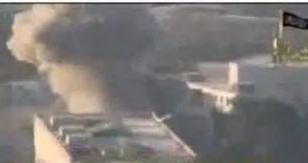
Car bomb explodes in the vicinity of the Syrian army general headquarters in Damascus (youtube.com, ict.org.il)
- Suicide bombing attack at the Al-Hayaa hospital in Aleppo, which according to the Al-Nusra Front served as a headquarters for the Syrian regime, September 9, 2012: the attack was carried out by a suicide bomber in a truck carrying several tons of explosives. The Al-Nusra Front argued that 300 regime loyalists were killed. On the other hand, the Syrian regime said that two soldiers at the roadblock were killed (syriantelegraph.com, youtube.com). The Al-Nusra Front claimed responsibility for the attack on February 23, 2013 (breakingnews.sg).
- Suicide bombing at a Syrian military camp in the Al-Qusayr region, January 23, 2013: a suicide bomber drove a truck laden with 20 tons of explosives into the camp. The number of casualties was not reported. It was the largest amount of explosives used by the organization in its suicide bombing attacks (youtube.com.
- Suicide car bombing of a military security building in the town of Kalamoon, a suburb of Damascus, June 8, 2013: more than 98 regime members were hit in the attack, some were killed and some injured (eldorar.com).
- Multi-pronged terrorist attack on police and criminal security department facilities in Damascus, June 23, 2013. The Syrian Ministry of Interior reported that suicide bombers blew themselves up at the entrance of the police building in the Damascus neighborhood of Ruknuddin. Other suicide bombers with explosive belts attempted to enter the criminal investigations building in the Bab Masli square. The terrorists were killed before they could get into the building, said the announcement released by the Ministry of Interior. Five people were killed in the attack; nine civilians and troops were injured. Considerable damage was caused to property (Syrian News Agency, June 23, 2013). It was an operation carried out jointly by the Al-Nusra Front and another organization (eldorar.com).
Car bombs detonated by remote control
The Al-Nusra Front and other jihadist organizations use car and truck bombs that are not driven by suicide bombers but detonated by remote control. Below are some examples:
Motorcycle bombs
The Al-Nusra Front normally prefers to use car and truck bombs since they can carry more explosives. However, in some cases it has used motorcycle bombs, with less explosives. For instance, on April 16, 2013 it was reported on Facebook that an Al-Nusra Front operative detonated a motorcycle laden with explosives which he parked next to Syrian soldiers at a roadblock. According to the report, 5 to 8 soldiers were killed (facebook.com). On October 31, 2012 a motorcycle blew up near Zainab’s Tomb, south of Damascus. At least eight people were killed and dozens were injured (almasryfalyoum.com). It is not known which organization was responsible for the attack, but it was carried out as part of a campaign waged by Salafist-jihadi elements to take over the tomb compound, which Shi’ites consider sacred.
Attacks on airfields
Syria’s military and civilian airfields are favorite targets for the Al-Nusra Front, which usually attacks them in collaboration with other rebel groups. The high significance placed on such attacks stems from the air force’s loyalty to the Syrian regime as well as considerations of operative convenience. They are also targeted because the regime makes extensive use of the air force to hit the rebels and since airfields are used for transporting weapons and troops to suppress the uprising. The following are photographs of attacks on airfields in Syria’s various governorates:
Attacks on Syrian military bases in rural areas
The Al-Nusra Front often attacks Syrian military bases in rural areas, where the Syrian regime has difficulties defending them. Some of the attacks take place after the base has been encircled for a long time. The idea behind such combat tactics is to crush the Syrian army, take over its weapons, and make it difficult for the Syrian regime and army to function across the country. The attacks have led to a sharp decline in the Syrian regime’s ability to govern remote areas.
Use of IEDs
The Al-Nusra Front often uses roadside charges against vehicles, patrols, and convoys of the Syrian army and security forces. In our assessment, this is an operative legacy of Al-Qaeda in Iraq, which specialized in using sophisticated roadside charges against the U.S. and its allies. The Al-Nusra Front has Syrian and Iraqi operatives who gained military experience in Iraq, particularly in the manufacture of improvised explosive devices.
Detonating IEDs (from a video posted on YouTube by the White Minaret, the Al-Nusra Front’s media network, on June 1, 2013)
Attacks on border crossings
Border crossings are also first-priority targets for the Al-Nusra Front. Controlling them provides the organization with the ability to monitor the movement of operatives, transport weapons into Syria, and disrupt the regime’s ability to govern. According to a lecture delivered by Israel’s chief of Military Intelligence Maj.-Gen. Aviv Kokhavi at the Herzliya Conference (March 14, 2013), the rebels control 11 of Syria’s 17 existing border crossings. This means, according to Maj.-Gen. Kokhavi, that weapons and global jihad operatives flow into Syria and refugees flow from Syria to other countries.
The following are several examples of attacks on border crossings: in January 2012 the Al-Nusra Front attacked the Tell Ahmar crossing between Syria and Turkey; on July 19, 2012 Al-Nusra Front operatives took over the Bab al-Hawa crossing, also between Syria and Turkey; on June 10, 2012 Al-Nusra Front operatives attacked the Al-Waleed crossing, in the Iraq-Syria-Jordan border triangle. They killed dozens of Iraqi soldiers and officers stationed there to prevent rebels from receiving supplies from Iraq, but were unable to capture the crossing.
Rocket fire
The Al-Nusra Front makes use of rocket fire at targets affiliated with the Syrian regime and Shi’ite population centers in Lebanon. It is our impression that so far the use of rockets has been rather limited, perhaps owing to a shortage of standard long-range rockets.
In the first half of 2013, during the campaign for Al-Qusayr, rockets were fired from Syrian territory into Shi’ite population centers in Lebanon near the city of Hermel (northern Bekaa Valley) and into the central part of the Bekaa Valley (Baalbek region). Lebanese media reported that a number of Lebanese were injured in the attacks. The attacks apparently stopped after Al-Qusayr was taken over by Hezbollah and the rebels (particularly Al-Nusra Front operatives) left the area.
The Al-Nusra Front develops home-made rockets. In January 2013 the organization reported that it was developing home-made rockets called Faysal-1 and Faysal-2, with a range of about 8 km, or 5 miles (youtube.com).
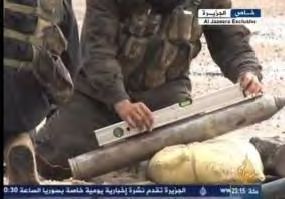
A Faysal-1 rocket is activated using a wire connected to its lower end (youtube.com, January 8, 2013)
Attacks on roadblocks
Roadblocks erected by Syrian security forces are an important means of control for the regime and a favorite target for the Al-Nusra Front and other rebel groups.

Explosion at the Tell Othman roadblock in the environs of Hama in February 2013. The roadblock was first attacked by snipers who killed several soldiers stationed there (alboraq.info).
Al-Nusra Front activity in southern Syria
The environs of Daraa
We believe that the Al-Nusra Front places great importance on entrenching itself in the environs of Daraa and in southern Syria in general, in particular due to the region’s geopolitical significance. Control of or influence in southern Syria may help the organization with transporting operatives and weapons from Jordan[35] and obtaining a foothold in the Golan Heights, near the border with Israel. In the future, it may also become a hub for the Al-Nusra Front to export terrorism to Jordan and other Arab countries.
The most dominant rebel organization in the Daraa Governorate is the Free Syrian Army, which controls part of it (on July 28, 2013 Al-Arabiyya TV aired a report showing which parts of the governorate are under the control of the Syrian army and which parts are controlled by the Free Syrian Army). The Al-Nusra Front has considerable military presence in the governorate and carries out large-scale operations there, alongside other rebel organizations.
This past year the Al-Nusra Front has claimed responsibility for many dozens of operations against targets affiliated with the Syrian regime in the Daraa Governorate. They included attacks on Syrian army camps, roadblocks, convoys, and vehicles, as well as car bomb attacks combined with suicide bombings and assaults on Syrian army troops. According to a Syrian news website that operates outside of Syria, the Al-Nusra Front has built up a sizeable military force in southern Syria and is well on its way to becoming the most dominant organization in the region due to the considerable sums of money it pays its operatives (syriatruth, December 28, 2013). At the same time, there is some evidence to suggest that the Al-Nusra Front is also involved in civilian activity in the environs of Daraa, albeit on a smaller scale than in northern and eastern Syria (see Section Six).
Al-Nusra Front military activity in the environs of Daraa
A notable act of terrorism, responsibility for which was claimed by the Al-Nusra Front in cooperation with other Islamic organizations, was an attack on a Syrian army roadblock situated next to two thirteen-story buildings overlooking the city of Daraa. According to a video uploaded to YouTube on July 19, 2013, titled “Announcement No. 317”, the attack began on June 6 and ended on June 27, 2013. Two car bombs were detonated during the attack, one by a suicide bomber (see photograph) and the other by remote control. According to the announcement, the attackers subdued the Shabiha operating the roadblock and then took over the surrounding area and bombed the two tall buildings.
The Golan Heights
The Golan Heights region (Quneitra and the Syrian-Jordanian-Israeli border triangle) is the scene of fighting between the rebel forces and the Syrian army. Among the rebels, the Free Syrian Army is the dominant organization. So far, the Al-Nusra Front and other jihadist groups have not gained any considerable foothold in the Golan Heights, even though they are active and maintain military presence in several villages (which is often exaggerated by the Syrian regime and its supporters for propaganda reasons and for the purpose of branding all rebels as jihadists).
A March 22, 2013 report released by SANA, Syria’s official news agency, said that on March 21 Syrian army forces captured the towns of Khan Arnabah and Khadr after a series of operations targeting the Al-Nusra Front. According to the report, Syrian army forces demolished buildings used by the Al-Nusra Front for storing ammunition and weapons. A report posted by Jordanian news website JBC on March 27, 2013 said that an Al-Nusra Front force took over Wadi Rukad, to the east of the Golan Heights, and a water reservoir near the Syrian-Jordanian-Israeli border triangle (JBC News). On June 20, 2013 the Syrian army announced that it eliminated Al-Nusra Front operatives in the environs of Quneitra, Daraa, and Al-Hasakah (albaathmedia.sg).
A notable (and exceptional) showcase attack carried out by the Al-Nusra Front in the Golan Heights took place on January 25, 2013. The organization’s operatives attacked a building in the village of Sasa that housed the military intelligence branch of the Quneitra Governorate, an important administrative symbol of the Syrian regime. The building was razed with two car bombs. According to the Al-Nusra Front, four suicide bombers took part in the attack, for which it subsequently claimed responsibility. According to Syrian military sources, 53 military intelligence personnel were killed in the attack, six of them officers. Some 90 people were injured. Among those killed was Amid (brigadier general) Adnan Ibrahim, the chief of the Quneitra Governorate Military Intelligence Department (syriahr.net).
Execution of captives
The Al-Nusra Front often executes captured Syrian troops and Shabiha. For instance, Al-Nusra Front operatives took several captives in an attack on a Syrian roadblock in Idlib. The operatives slit the throats of five captives and dumped their bodies to spread fear among their enemies (globalpost.com). In another instance, the Al-Nusra Front filmed the execution of twenty Syrian soldiers in Aleppo (the video was posted on October 4, 2012). A top Al-Nusra Front operative in the Aleppo region told an American reporter, “We detained them, lined them up and killed them. They were fighters fighting us. So this is terrorism, but we forget that there is an entire state that has terrorized people for 40 years?” (world.time.com).
In May 2012 demonstrations took place in the city of Al-Raqqa after Al-Nusra Front operatives executed three captive Syrian officers (Al-Sharq al-Awsat, May 16, 2013). In another instance a YouTube video showed Syrian regime loyalists being executed by Al-Nusra Front operatives.
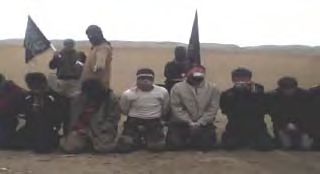
Regime loyalists executed by Al-Nusra Front operatives in eastern Syria. The date and precise location are unknown (youtube.com).
A video uploaded to YouTube on June 26, 2013 showed Chechen Al-Nusra Front operatives executing supporters of the Assad regime by decapitation. The victims are believed to be two or three Christian men from the Idlib region, one of them an archbishop (mepanorama.com).
The Al-Nusra Front response to the use of chemical weapons by the Syrian regime
Preparatory measures for what seemed at the time like an imminent U.S. attack were taken not only by Syrian regime forces but also by the rebels, particularly the Al-Nusra Front and the Islamic State in Iraq and Greater Syria. Those two Al-Qaedaaffiliated organizations were worried that, being the “true enemy” of the U.S., they would be targeted by the attack (Reuters, August 31, 2013; The Guardian, September 8, 2013).
Western media reported that thousands of jihadist operatives in northern Syria, including operatives of the Islamic State in Iraq and Greater Syria, took a series of measures in anticipation of a U.S.-led strike: evacuating bases, hiding weapons, putting anti-aircraft batteries on alert, and spreading operatives and cars among farms and local communities that were forced to “host” them. Security for the local leaders (the amirs) was increased (changing their locations and cars). A local amir of the Islamic State in Iraq and Greater Syria, codenamed Abu Ismail, said that the measures were taken due to lessons learned from the fighting in Iraq (The Guardian, September 8, 2013; Reuters, August 31, 2013).
Prior to that, on August 24, 2013, Al-Nusra Front leader Abu Muhammad al-Julani released a YouTube audio clip calling for revenge against the Syrian regime for its use of chemical weapons. The tape accused the Assad (“Nusayri”) regime of attacking the eastern suburbs of Damascus with dozens of rockets carrying chemical substances and killing hundreds of children, women, and men. Al-Julani called on jihad warriors to avenge the murder of the children by launching “eye for an eye” attacks on Alawite (“Nusayri”) villages: “For every chemical rocket that landed on our people in Syria, an [Alawite] village will pay”.
[*] Read the other sections here:
![]()
Notes:
[33] It appears that other rebel organizations, too, perceive the Al-Nusra Front as having higher military capabilities. On May 8, 2013 The Guardian reported that Free Syrian Army operatives were defecting to join the Al-Nusra Front, believing it was the best equipped, financed, and motivated force fighting the Syrian regime.
[34] The Al-Nusra Front has also carried out attacks with terrorists blowing themselves up using explosive belts. However, it seems that the organization prefers using car bombs, which cause greater destruction and more casualties.
[35] See report by Al-Hayat’s correspondent in Jordan (April 21, 2013), describing how Salafist-jihadi fighters from Jordan cross the border to join the Al-Nusra Front in Daraa. Munif Samara, a senior Salafist leader in Jordan, met with the reporter and told him that the considerable number of Jordanian Salafists with combat skills is an important manpower pool for the Al-Nusra Front and other Islamic organizations working in Syria. According to Samara, there are at least 500 Jordanians currently fighting against the Syrian forces, 40 of whom were killed and seven of whom died in suicide bombing attacks (istishhad).



 RSS
RSS



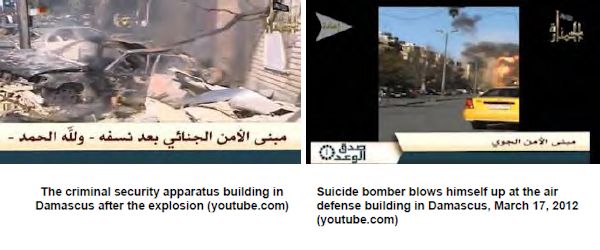

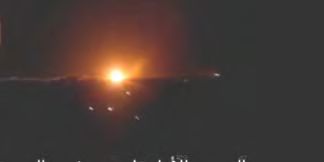
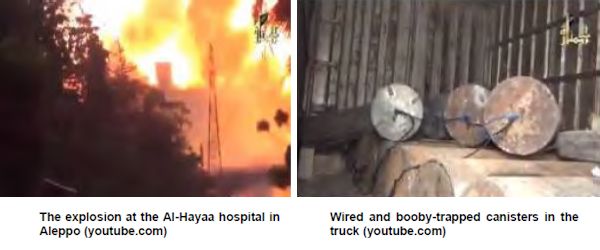
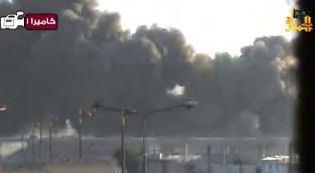
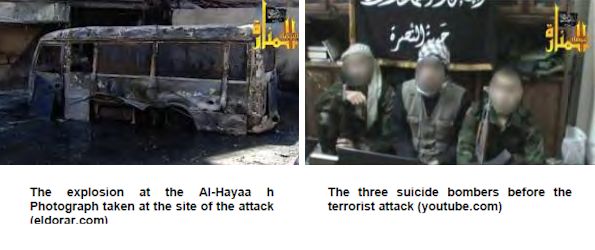

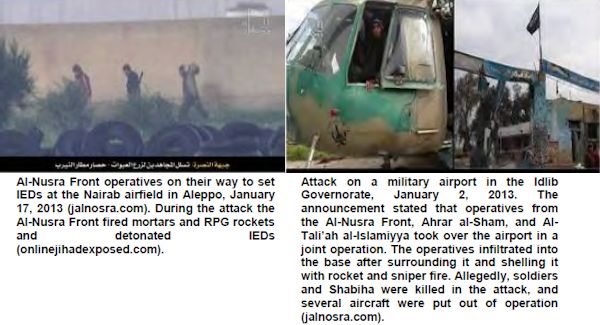

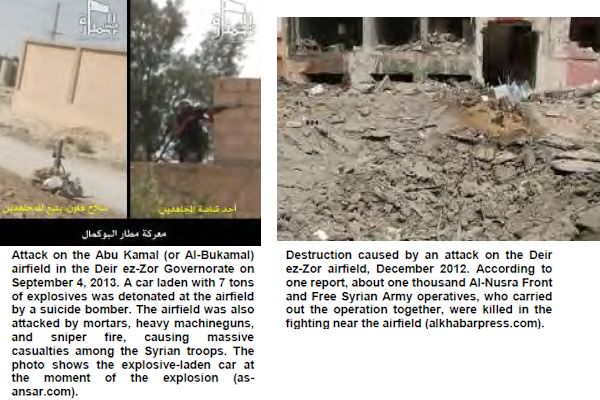
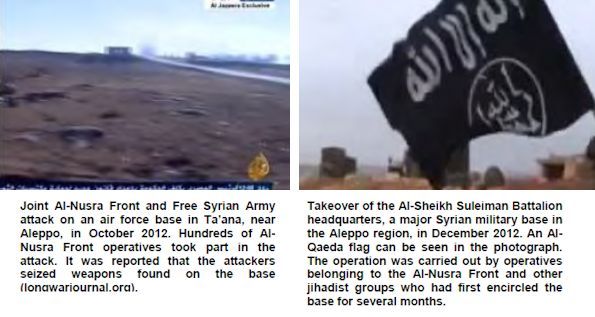
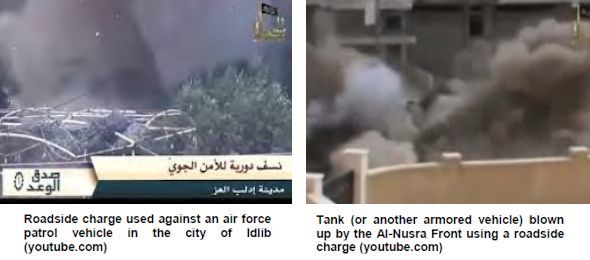
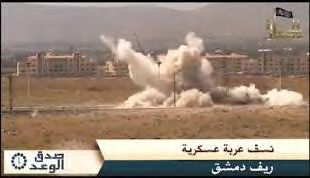
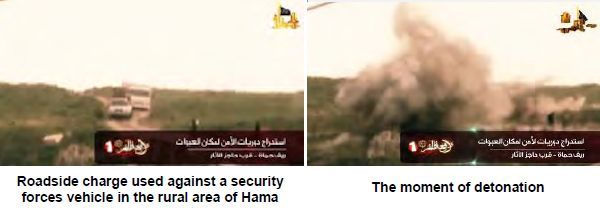
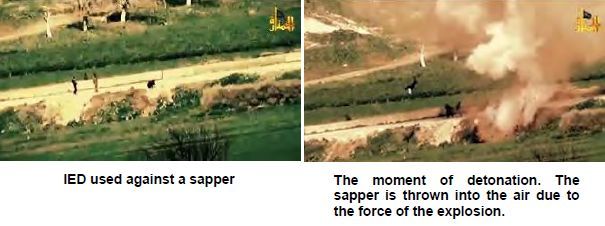

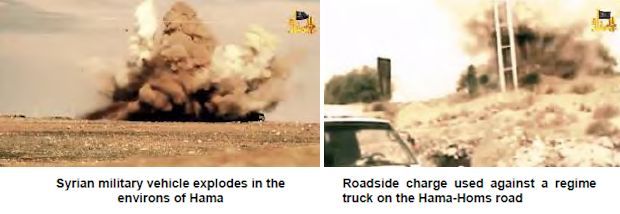
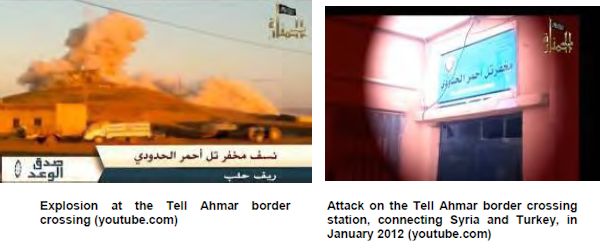
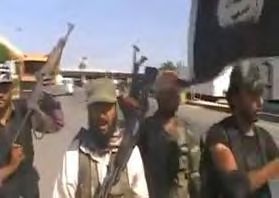
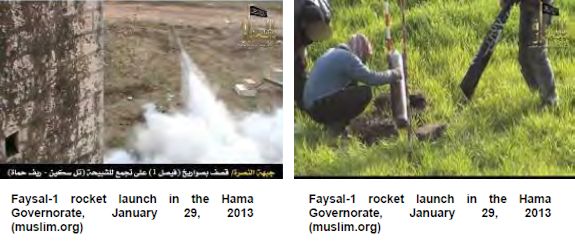
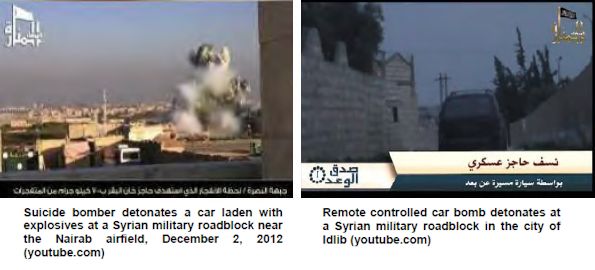
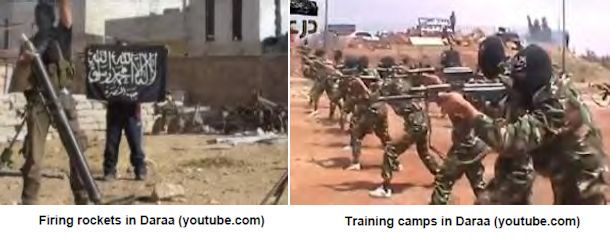
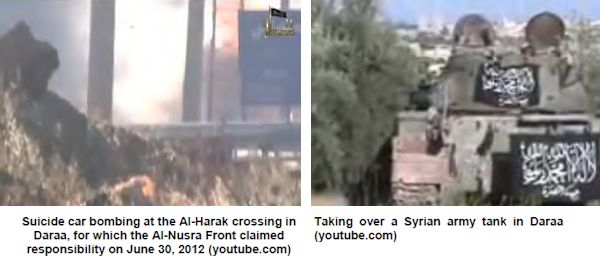
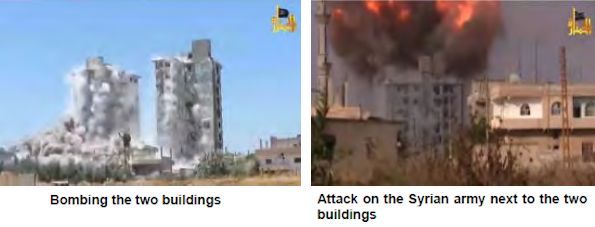

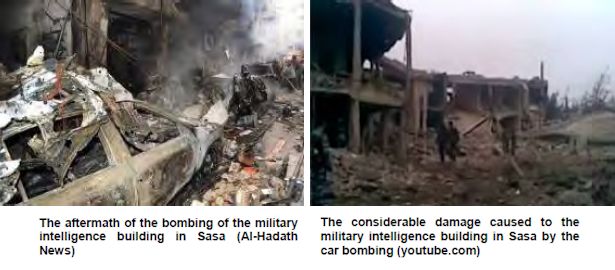
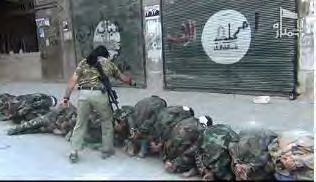
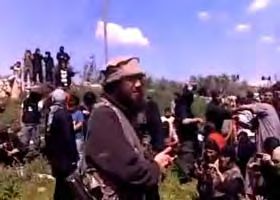
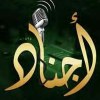

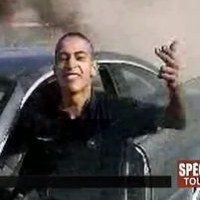
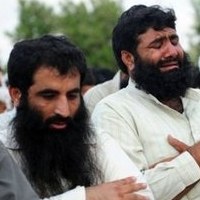
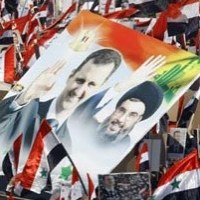




Latest Comments
Hello Mike, Thank you for your positive feedback to the article. I felt there wasn’t too much critical analysis of ...
Thanks for this considered and well constructed article. A follow up article on the manner in which the editorial contro...
THE CLUELESSNESS OF CLAIMING THAT OBAMA'S MIDDLE EAST POLICIES WERE A FAILURE CANNOT BE FURTHER FROM THE TRUTH, WHAT THE...
As long as Obama is the president of the usa do not trust the us government......
Thank you for an good read....